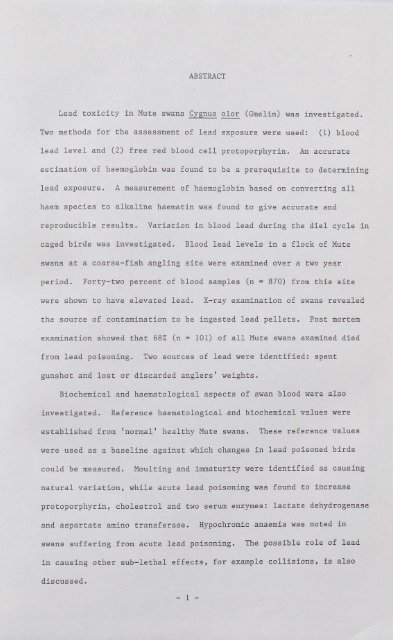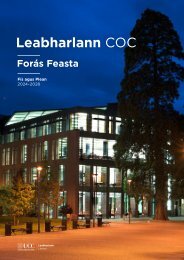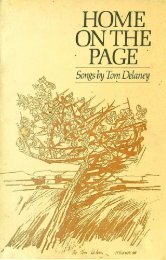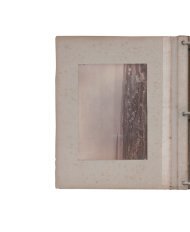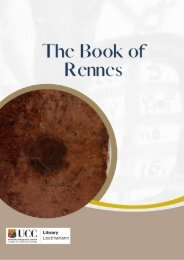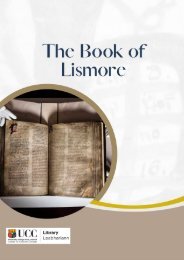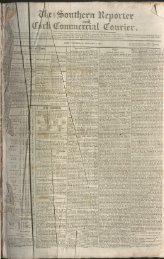Lead Toxicity in Mute Swans
LEAD TOXICITY IN MUTE SWANS Cygnus olor (Gmelin). By JOHN O'HALLORAN A thesis submitted to the National University of Ireland in candidature for the degree of Doctor of Philosophy September 1987
LEAD TOXICITY IN MUTE SWANS
Cygnus olor (Gmelin).
By
JOHN O'HALLORAN
A thesis submitted to the National University of Ireland
in candidature for the degree of Doctor of Philosophy
September 1987
You also want an ePaper? Increase the reach of your titles
YUMPU automatically turns print PDFs into web optimized ePapers that Google loves.
ABSTRACT<br />
<strong>Lead</strong> toxicity <strong>in</strong> <strong>Mute</strong> swans Cygnus olor (Gmel<strong>in</strong>) was <strong>in</strong>vestigated.<br />
Two methods for the assessment of lead exposure were used:<br />
(1) blood<br />
lead level and (2) free red blood cell protoporphyr<strong>in</strong>.<br />
An accurate<br />
estimation of haemoglob<strong>in</strong> was found to be a prerequisite to determ<strong>in</strong><strong>in</strong>g<br />
lead exposure.<br />
A measurement of haemoglob<strong>in</strong> based on convert<strong>in</strong>g all<br />
haem species to alkal<strong>in</strong>e haemat<strong>in</strong> was found to give accurate and<br />
reproducible results. Variation <strong>in</strong> blood lead dur<strong>in</strong>g the diel cycle <strong>in</strong><br />
caged birds was <strong>in</strong>vestigated.<br />
Blood lead levels <strong>in</strong> a flock of <strong>Mute</strong><br />
swans at a coarse-fish angl<strong>in</strong>g site were exam<strong>in</strong>ed over a two year<br />
period.<br />
Forty-two percent of blood samples (n = 870) from this site<br />
were shown to have elevated lead.<br />
X-ray exam<strong>in</strong>ation of swans revealed<br />
the source of contam<strong>in</strong>ation to be <strong>in</strong>gested lead pellets. Post mortem<br />
exam<strong>in</strong>ation showed that 68% (n = 101) of all <strong>Mute</strong> swans exam<strong>in</strong>ed died<br />
from lead poison<strong>in</strong>g.<br />
Two sources of lead were identified: spent<br />
gunshot and lost or discarded anglers' weights.<br />
Biochemical and haematological aspects of swan blood were also<br />
<strong>in</strong>vestigated.<br />
Reference haematological and biochemical values were<br />
established from 'normal' healthy <strong>Mute</strong> swans.<br />
These reference values<br />
were used as a basel<strong>in</strong>e aga<strong>in</strong>st which changes <strong>in</strong> lead poisoned birds<br />
could be measured.<br />
Moult<strong>in</strong>g and immaturity were identified as caus<strong>in</strong>g<br />
natural variation, while acute lead poison<strong>in</strong>g was found to <strong>in</strong>crease<br />
protoporphyr<strong>in</strong>, cholestrol and two serum enzymes: lactate dehydrogenase<br />
and aspartate am<strong>in</strong>o transferase.<br />
Hypochromic anaemia was noted <strong>in</strong><br />
swans suffer<strong>in</strong>g from acute lead poison<strong>in</strong>g.<br />
The possible role of lead<br />
<strong>in</strong> caus<strong>in</strong>g other sub-lethal effects, for example collisions, is also<br />
discussed.<br />
- 1 -


